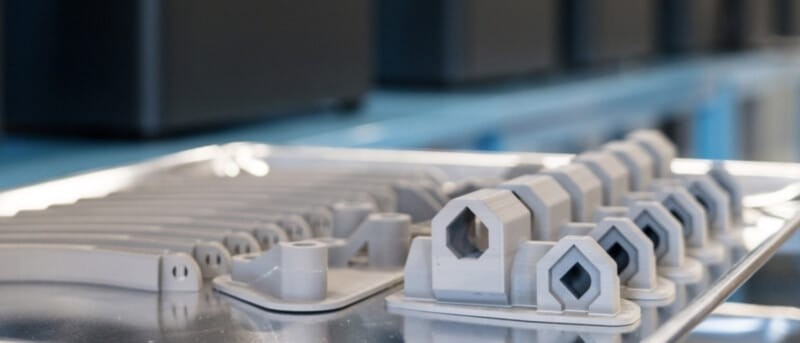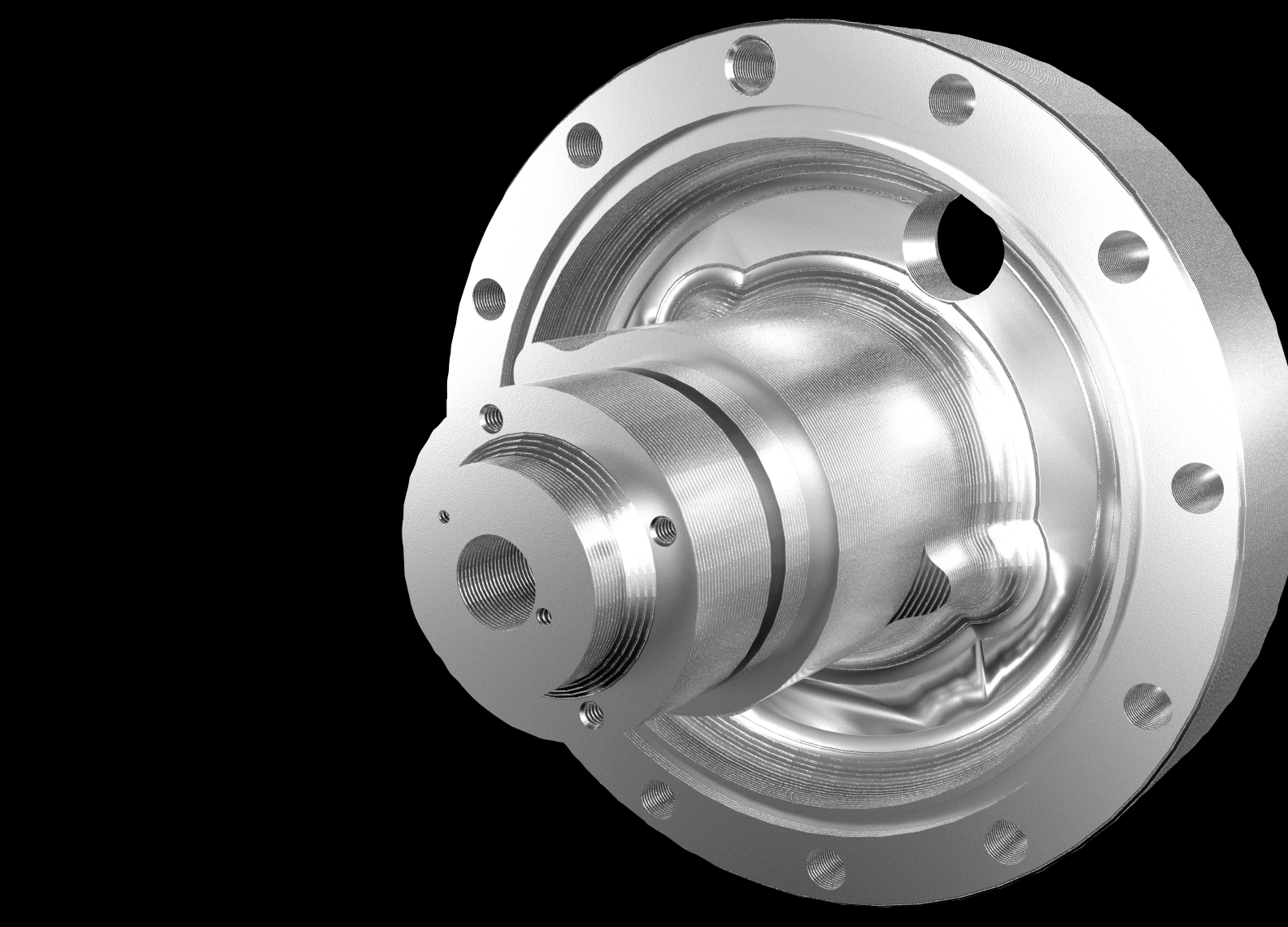
Why Do Polymer 3D Printing Users Add Metal to the Toolbox?
By Ross Adams, Global Metal Product Manager
“Metal FFF excites me because it adds unprecedented accessibility to metal 3D printing. Organizations can stop talking about how AM will change manufacturing and start doing it. As an AM advisor, I’ve seen many organizations build successful long-term AM strategies: if you’re successfully printing polymers and composites, you’re already halfway there.” -Ross Adams, Global Metal Product Manager at Markforged
Nearly every organization who uses metal 3D printing began their additive manufacturing (AM) journey printing polymers. After a few years of using Fused Filament Fabrication (FFF) printing, they’ve developed core skills like design for additive manufacturing (DfAM) knowledge and the ability to identify impactful applications for continuous process improvements.
Once your factory floor experiences the many process improvements that can be unlocked printing polymers and composites, you might be wondering how your organization can scale these benefits. A common answer is metal 3D printing.
Here I’ll discuss the reasons why manufacturers with composite 3D printers often add metal AM to the toolbox, when metal should be preferred over plastics and composites, and how you can get creative with plastic-metal hybrid parts to address an even wider range of manufacturing challenges.
Moving towards metal: starting with 3D printed polymers
After a few years of 3D printing polymers, the question usually becomes “how can I expand additive in their organization to pursue more aggressive and high-value applications?” While 3D printing polymers is the fastest and easiest way to solve many manufacturing challenges, metal 3D printing is a catalyst for scaling AM into even more high-value applications.
You only use steel when you need steel…but when you need steel, you must use steel. There is no substitution for the properties that steel achieves. It's not only often faster and cheaper to additively manufacture metal parts: printing can produce geometries that are impractical, or even outright impossible to machine.
Metal 3D printing is often perceived as expensive and complicated, but this is just the reality of any type of metal manufacturing method. In fact for many situations, metal 3D printing actually offers the most simple and economical way to get your metal part. Metal Fused Filament Fabrication (metal FFF) technology in particular makes 3D printing metal parts more accessible than other metal AM technologies, requiring a significantly lower investment (we’re talking hundreds of thousands of dollars less) to own and operate. It’s also safer and easier to use, not requiring a highly trained operator: a wide range of materials like stainless steel, tool steels, Inconel, and pure copper can be printed with minimal PPE and safety precautions. This is due to its bound powder feedstock, compared to other metal AM processes which use loose powder.
Internalizing the knowledge and benefits of polymer FFF 3D printing makes the transition to metal FFF 3D printing seamless: the underlying process is very much the same.
When should you 3D print metal vs. polymer composites?

Polymer 3D printing and metal 3D printing are two different fabrication methods. Each can solve a wide range of manufacturing challenges alone. The common denominator is they’re both versatile ways to patch supply chains at every point: from functional prototypes, tooling and fixtures, spare parts, and all the way to low volume end-use and production.
While both metals and continuous fiber-reinforced polymer composites perform well in applications that require high strength, application-specific considerations such as surface hardness and strength-to-weight ratios may lean towards favoring either 3D-printed composites, metals, or composite-metal hybrid parts.
Parts are usually printed in metal over composite because they must achieve at least one of the following requirements: high strength, wear resistance, heat resistance, corrosion resistance, electrical conductivity, or thermal conductivity.
Frequently, manufacturers print composites to quickly prototype parts that will ultimately be metal. Some prototypes will require specific material properties that prevent composite prototypes from being functional. Often, after prototyping properly functioning parts with metal FFF, the users then ask themselves: why not use this process in production? Comparing tooling costs to make parts through processes like casting makes metal FFF a very attractive solution to scaling up production for achievable volumes.

Tooling is often printed in composites, but metal tooling is more durable in regards to wear resistance and operating in extreme heat conditions. Parts that demand high strength with thin walls or intricate geometries—such as End of Arm Tooling (EOAT)—may also be too small for continuous fiber reinforcement (CFR), the process that strengthens 3D printed composites.

Higher surface hardness and strength adds more longevity for 3D printed tools. Avoiding the need for frequent replacements due to high cycle fatigue is a valuable benefit for applications such as bending and stamping dies, grippers, fixtures, and custom hand tools.

The option to print exotic materials like pure copper also opens up applications that require electrical properties such as weld shanks, busbars, and induction coils.

Though a metal part is heavier than a composite equivalent, metal FFF-printed parts are still lighter than conventionally manufactured metals due to the closed infill structure automatically generated in Markforged’s slicer software, Eiger. This closed infill structure can lightweight a metal part by up to 50%.


Composite + metal = new use cases
A major upside of adding metal to the 3D printing toolbox is the ability to make hybrid parts. Using different combinations of metal, plastic, and reinforcing fiber materials can take advantage of varying material properties for complementary performance in complex applications.
Hybrid parts means you can print larger parts and assemblies, lightweight metal parts with composite components, boost material properties of composite parts, make parts with better load handling and force optimization, and increase part modularity. Portions and features of metal parts that do not require metal’s material properties can be printed faster with composites and combined through assembly.
With access to multiple 3D printers, these larger parts can also be produced faster by printing concurrently: increasing the range of supply chain-critical parts you can make on a moment’s notice.


Building bulletproof supply chains
Additive manufacturing in general is a great way to make sure production is never held up by a need for unique parts with long lead times: in most instances, it gets you the part much faster and more economically at the point of need.
Composite 3D printing is an above and beyond solution for a great deal of these applications — but bringing in metal 3D printing scales AM’s benefits to cover an even wider range of manufacturing challenges across your factory floor.
Metal alone unlocks aggressive new use cases to quickly replace expensive parts that are otherwise complicated to make and difficult to procure. The option to produce hybrid parts means you can build larger parts with quick lead times while optimizing for varying material property requirements. Ultimately, this means more process improvements, simplified supply chains, and greater ability to solve manufacturing challenges in-house.

About the Metal X system
The Metal X system offers the most accessible AM platform: safe, affordable, and easy to use. With features such as Next Day Metal, it can quickly produce parts in Stainless Steel (17-4PH), Tool Steels (A2, D2, H13), Pure Copper, and Inconel.
As metal FFF fabrication uses bound powder as opposed to loose powder-based processes such as Powder Bed Fusion and Binder Jetting, the Metal X poses far less safety and handling concerns, requiring only minimal PPE.
Want to learn more about the Metal X system? Click here to get in touch so we can help you evaluate its impact and returns for your organization.

Markforged to Expand into Mass Production of End-Use Metal Parts Through Digital Metal Acquisition

Caldwell Manufacturing

How the Metal FFF 3D Printing Process Works
All of the blogs and the information contained within those blogs are copyright by Markforged, Inc. and may not be copied, modified, or adopted in any way without our written permission. Our blogs may contain our service marks or trademarks, as well as of those our affiliates. Your use of our blogs does not constitute any right or license for you to use our service marks or trademarks without our prior permission. Markforged Information provided in our blogs should not be considered professional advice. We are under no obligation to update or revise blogs based on new information, subsequent events, or otherwise.
Never miss an article
Subscribe to get new Markforged content in your inbox
